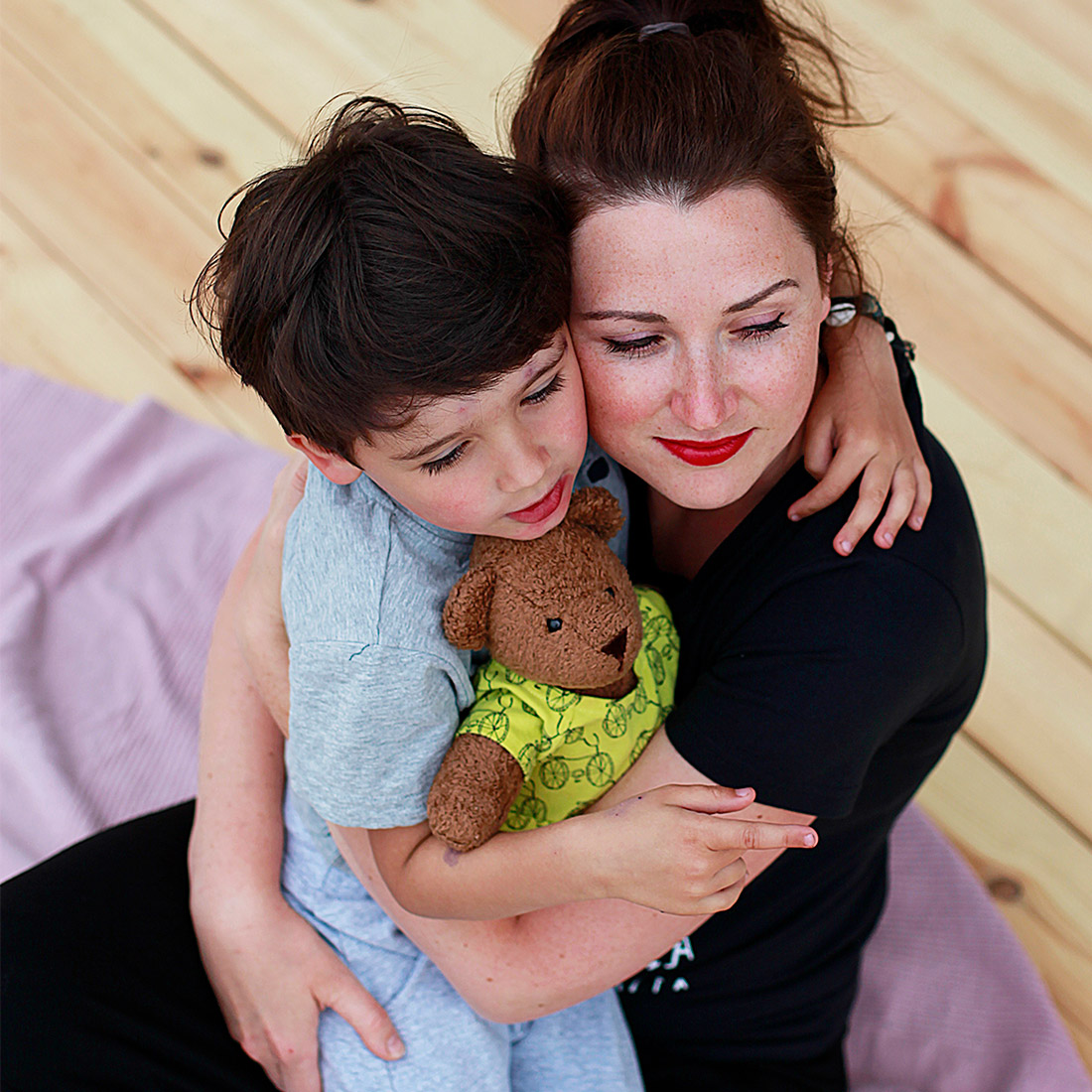
What is Attachment Parenting? It's a philosophy of building a parent-child relationship based on mutual respect and trust. This idea is based on several important principles that lead to understanding children's minds and responding appropriately to their needs. Why is it worth practicing attachment parenting? How do its principles impact family bonds?
Attachment Parenting – what is it?
The arrival of a new family member brings significant changes to every parent's life. Their daily routine becomes dependent on the little one, and the ever-increasing tasks sometimes lead to exhaustion and resignation. A sense of duty and a desire to ensure peace and security compel both mothers and fathers to seek ways to understand their child's needs and properly meet them. It's no wonder that more and more parents are choosing to implement Attachment Parenting (AP),
the idea of creating strong emotional bonds between children and their caregivers, in their daily lives. It's based primarily on closeness – built through cuddling, it allows for listening to the child's needs, finding ways to solve their problems, and ensuring stability. The "RB" philosophy leads to a child's balanced mental development, creating healthy peer relationships, and experiencing more frequent happiness. AP requires parents to be creative and adapt to the needs of their growing child – it's based on observation and adapting messages according to the child's age. Also read:
How to support infant development? Learn the three most important principles. Attachment Parenting – The Rules
While Attachment Parenting isn't a definitive recipe for raising children, it does offer guidance for parents on how to build a relationship with their children. Many specialists promoting this approach suggest several principles (also called tools) worth implementing in everyday life:
1. Focus on close parenting from birth
One of the first pillars of Attachment Parenting involves nurturing the bond with the baby from its earliest moments –
immediately after birth, the baby demonstrates a strong need for contact with its mother. Sharing a room, touching, and feeling the warmth of skin-to-skin allows for a peaceful bond to be built and leads to a better understanding of the baby.
2. Try to breastfeed
Another crucial aspect of close parenting is breastfeeding –
this is the time when mother and child must learn to recognize each other's reactions and needs. Thanks to this established ritual, the baby will not only satisfy his hunger but also provide his body with valuable nutrients essential for proper development and will feel a growing attachment to his mother.

3. Close parenting - Hug and carry your little one in your arms
Carrying a baby in your arms, in a soft wrap, or in a carrier not only helps build a bond between parent and baby –
it's also a way to explore the world and strengthen trust. Contrary to popular belief, it doesn't lead to spoiling the baby and thus constantly demanding attention. Rocking and cuddling, as well as daily care, strengthen a baby's sense of security. See also:
Why is cuddling so important? 4. Closeness Parenting and Sleep
Sleep not only allows you to recharge after a difficult day, but also builds a bond with your baby.
Spending the night in the same room with your little one makes feeding easier and allows you to calm down more quickly or fall asleep after a sudden awakening. It also teaches your child a valuable lesson, as their closeness to their parents gradually helps them lose their fear of the dark.

5. Respond to your baby's cries and emotions
Some adults perceive a baby's crying as an attempt at manipulation – this is a mistake.
Newborns and infants use crying to signal a problem , which may be related to, for example, an uncomfortable label on
clothing or digestive issues. Responding to sudden outbursts of anger builds a toddler's trust. It's worth remembering that over time, both mothers and fathers can distinguish between different signals, allowing them to meet their child's needs much more quickly.
6. Give up on the "good advice" of your surroundings and family
Online guides and forums are full of tips and rules on how to raise a child.
Rigidly following recommendations and treating your child like an adult isn't conducive to building a relationship, and a heavy-handed approach can even lead to a loss of trust. Therefore, when adopting the idea of Attachment Parenting, it's worth forgoing "good advice" and listening to your instincts. Attachment Parenting doesn't preclude seeking professional help – if you have any concerns, seek advice from a trusted pediatrician or child psychologist.
7. Balance in the family is the key to success
The final, yet equally important, principle of close parenting is balance.
Parents should provide care and understanding for their child, but also ensure their own comfort and convenience. Fatigue prevents proper bonding, and neglecting family relationships can lead to anxiety and sadness. Therefore, parents must not forget about themselves while simultaneously striving to meet the needs of other family members.

Why is it worth using attachment parenting?
Attachment Parenting teaches you to observe the world around you through a child's eyes. Cuddling, rocking, and responding to crying strengthen family relationships and allow you to better understand your little one and delve into their psyche. Unlike stress-free parenting, the "RB" philosophy doesn't ignore the need for continuous learning and familiarization with the rules of the world around you—it simply requires adapting communication to your child's level. The above principles of Attachment Parenting aren't rigid rules—
every child is different, and the concept should be adapted to the current situation at home. Lack of breastfeeding, the inability to carry your little one in your arms, or the desire to sleep in separate rooms don't preclude parenting with attachment. It's important to read subtle signals and show your little one love as often as needed. You might be interested in:
Brave as a Preschooler – A Guide to Skillful Toddler Adaptation





Podziel się:
Diet during pregnancy - nutritional principles for expectant mothers
How to throw a Halloween party for kids